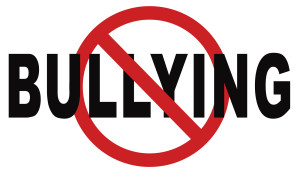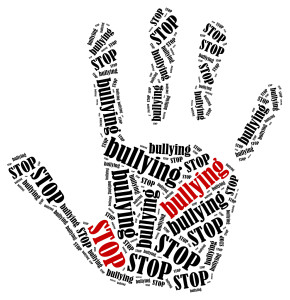Bully Proof Your Child

stop bullying prevention
Bullying is a devastating problem in schools. The impacts of bullying are far reaching and the old advice to “stand up to a bully” is quite frankly wholly inadequate when it comes to addressing the problem of bullying.
In fact to adequately address bullying the approach has moved outside of the direct interaction of the bully and the bullied parties.
Why Do We Bully:
Bullying has more than one function but is all about enhancing the sense of power and social security of the bullying party.

Bully making a fist
The Classic Bully
The bully who picks on the child for lunch money or to convey how tough they are. This is the classic image of a bully. The big mean boy looming over the smaller boy, punching him and throwing him to the ground. While this still occurs it is not the most common form of bullying. It is also not the form of bullying likely to have the greatest long-term damaging impact.
The In Crowd Bully
An in crowd cannot be an in crowd without an out crowd. A group of friends who are close is not an in crowd. An in crowd requires an exclusionary component. Often in crowds have an alpha/leader. The status and prestige of being in the in crowd is intended to make the members feel that they are worthy, accepted, and valued. In Crowd bullying is usually thought of as occurring with girls but it is definitely present among boys as well. Think of the group of athletes taunting another boy not part of their group as he passes by or the group of girls laughing at the way another girl dresses.
This is the most pervasive form of bullying and has the most significant long-term emotional impact on the victims who are made to feel insignificant, unworthy, and unaccepted by their peers.
The Ostracizing Bully
This is bullying that is often viewed by the bully as self-protective. As human beings, we have often protected ourselves by identifying individuals who may pose a threat to us. For example before we understood mental health clans of people would ostracize those who did not follow societal rules or were perceived as dangerous. Children may bully an awkward child who is either trying to align with them or they fear may appear to be aligned with them to others. In this situation the bullying is self-protective in the child’s eyes because they fear that they will not be accepted by their peers if they become associated with this outlying child.
Children who are bullied generally share several of the following traits:
- Hesitant to volunteer in class
- Hesitant to offer answers in class
- Make less eye contact
- Avoidant of confrontation
- Tend to hesitate to express their preferences, likes, and dislikes when asked to share
- Less physical prowess
- Soft spoken
- Insecure parental relationships
- Unsupportive perception of parents
- Insecurity
- Fear of upsetting others
- Shyness
- Anxiety/ worried nature
- Emotional or physical abuse at home
- Physical attributes that are easily pinpointed by others
Children who have been bullied often begin to dread attending school. They become more withdrawn and hesitant to speak up in class. They may begin to act out in hopes of appearing to be stronger to others. On the other extreme, they may become depressed and begin to manifest with physical ailments and open tearfulness.
Effective Bullying Programs in schools provide opportunities for anonymous reporting of bullying behavior. This allows other members of an in-group to report the bullying that they would otherwise likely avoid addressing. It also provides those who are bullied the opportunity to report it without having to approach staff directly. A thorough school bully prevention program involves a good deal of training for their staff and a pervasive culture of nonacceptance of bullying. Staff needs to react quickly and aggressively to address the behaviors. Discipline needs to be progressive and significant enough to back up the reported lack of tolerance. It should include the opportunity to process, discuss, and seek counsel for both the bullying and bullied parties.
While this is terrific and should absolutely be expected of a school as parents we know in our hearts that it is not enough.
The best bully prevention starts at home. It starts with building empathy, building confidence, and building supportive communicative relationships with our children.

Stop bullying. Word cloud illustration in shape of hand print showing protest.
The Bully Proofed Child
A bully proofed child is well informed about what bullying is and what it is not. They need to understand that they do not need to be friends with everyone but that they may not be deliberately unkind towards others. They need to understand that school is not their home and that everyone in the school has access to each activity as much as anyone else.
We need to work on teaching our children to think about how it makes them feel when they feel left out or negatively judged by their peers.
We need to teach our children the benefits to them of being kind to others. It helps to build empathy by thinking about how good it makes them feel about themselves when they do kind things for others.
We need to teach children the danger in being a bystander. Bystanders allow terrible things to be done to others in front of an audience. Without bystanders, silent permission some of the greatest atrocities in human history could not have occurred.
It is one thing for me to tell my child “never bully anyone.” It is far more effective to teach a child to stand up to bullies on the behalf of others. If we want to stamp out bullying we need to teach children to tell other children to stop bullying. It is far more effective to have a strong confident child tell a bully to stop than to tell the weaker, distraught child who is being bullied to tell the bully to stop.
The bully is given more ammunition to use against the victim when they ask them to stop. The bully already likely selected the child to be the target of the bullying because they do not possess the personality traits required to take such a stand.
The best part is that when you teach your child to stand up for others, reach out towards others in moments of weakness, and to be kind–You are teaching leadership. You are teaching them to right injustice. You are making them stronger. You are Bully Proofing them. When they feel like strong, confident, leaders they are much less likely to be bullied by peers and they are much less likely to bully their peers.
I mean what bully wants to bully someone who goes out of their way to stand up to bullies who are not even picking on them. That is the opposite of everything that makes someone a good bullying target.
Imagine a school filled with kids who stand up to any and all bullies. That could lead to bully extinction.
It may not be possible to eradicate it from the school, but I know we can do better than to just tell our children not to be a bully. We need to tell them not to be a bystander.
We need to have higher aspirations!
When someone drops their books and pencils all over the floor and other kids are laughing –I expect my child to be on the floor helping them pick up. I expect them to look that other child in the eye and tell them it is ok with all sincerity.
When a group of their friends are making fun of someone’s new glasses–I expect that my child will tell them to knock it off.
When a kid is pushing around and teasing a shy, smaller kid– I expect my child not to stand back and watch as part of a wall of bystanders. I expect my kid to walk right on up and tell the bully that they are out of line.
I expect that and it is better than just asking my kid not to do the bullying. That is how bullying will stop when the bullying is the behavior that gets a child ostracized by their peers.
This is the sort of life lesson that makes a leader for life. Sheep can stand by and watch it takes a leader to step outside of the crowd. No one wants to bully a leader. The world needs more leaders and fewer sheep.
Just imagine what a child who is given the skills and has the courage to stand up for others at an early age will contribute to world when they grow up!

Shannon
Latest posts by Shannon (see all)
- Social Anxiety: More Than Shy - July 10, 2016
- 3 BIG Reasons To Give Children Specific Meaningful Praise - June 27, 2016
- Protecting Children From Sexual Predators: Safety Without Paranoia - June 6, 2016


Leave a Reply